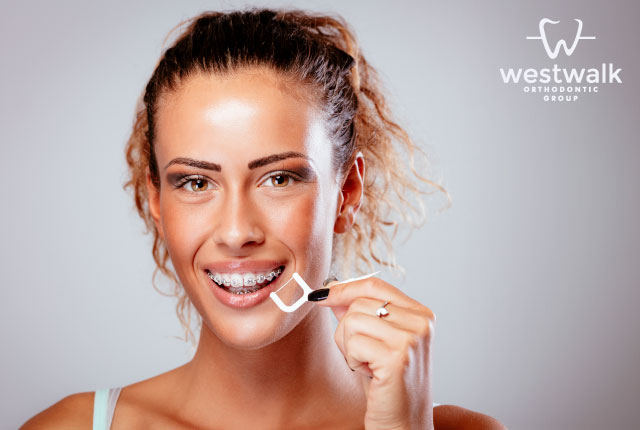How Do People With Braces Brush and Floss Their Teeth?
Everyone knows that maintaining good oral health practices is crucial in preventing tooth decay and infections. This, however, becomes even more important during your time with orthodontic treatments. Given that appliances create perfect hiding spots for food residues and bacteria to hide, your teeth and gums are more exposed to dental issues than ever.
If you are not careful with your hygiene, severe dental issues could develop that could delay or completely stop your orthodontic treatment in order to have another dental procedure done.
How to Brush With Braces?
The first step to brushing properly is to do it consistently. Dentists recommend brushing at least twice a day every day, if possible, after every meal. Consistency in brushing impedes bacteria and food residues from accumulating in your mouth and mixing into acids.
To start brushing, you’ll need a soft-bristled toothbrush and toothpaste with fluoride in it. The fluoride will help kill bacteria and remineralize the enamel in your teeth.
Brush your upper and lower gumline for at least 30 seconds each, then proceed to tilt your toothbrush at a 45° angle pointing toward your brackets and brush the top and bottom parts of them. Then, brush the top part of your brackets, and be careful to not bend any wire in the process. Lastly, brush behind every tooth and on the top surfaces of your molars as well.
How to Floss With Braces?
Just as with brushing, having a daily routine is crucial for flossing to benefit your oral health. Flossing at least once a day is incredibly helpful in removing food particles in the interdental space and avoiding tooth decay and gum disease.
To floss the space between teeth with braces on, you’ll have to thread the floss under the archwire and then pull it to your gums. If this part proves particularly difficult for you, you can buy floss threaders to make the process much easier. After getting the floss under the archwire, try to hug the side of the nearest tooth and clean as much of the surface as possible.
What Else Can I Do to Thoroughly Clean My Teeth While Wearing Braces?
Interdental Brush
An interdental brush has a toothbrush handle with a flexible and cone-shaped head. It comes in many different diameters, and its main objective is to clean the space between teeth, just like flossing. Given that an interdental brush is as effective as floss, it is a great alternative for those who find flossing too complicated.
Diet
It’s important to follow the diet your orthodontist gave you as strictly as possible. Specialists designed it to avoid foods that can damage your appliance as well as foods that can make cleaning more difficult. Sticky and sugary foods will stick to your braces and, if not cleaned properly, will lead to tooth decay, cavities, and much more.
Is It More Difficult to Brush With Lingual Braces?
It can be more difficult. While lingual braces are much less noticeable than ceramic or metal braces, they do have a disadvantage in the form of cleaning. Besides the obvious added difficulty in seeing your orthodontics when brushing and flossing, brackets in lingual braces tend to be closer to each other than in more common types of appliances, making the orthodontic more prone to getting food stuck in its pieces.
For those who still prefer these orthodontics over regular braces and are wondering how much lingual braces cost, estimates range from $5000 all the way to $13,000. Remember that costs vary depending on your specific condition and your dental plan.
How to Keep My Teeth Clean With Clear Aligners
Clear aligners make it much easier to keep your teeth clean when compared to other orthodontic appliances. You’ll have to wash your teeth and aligners at least twice a day. Use a soft-bristled toothbrush to clean the inside and outside of your aligners; you may find it easier to clean the outside of your trays while you are still wearing them. Don’t use toothpaste, as it could damage the aligners.
Additionally, it’s important that you rinse both your teeth and your aligners thoroughly after every meal. If possible, you should brush them instead. The last thing you need is a piece of food stuck inside your trays for hours at a time.
Remember that even if having clear aligners has various advantages over other orthodontic appliances, you’ll still need retainers after you finish your treatment.
Take Care of Your Smile With Us
If you are considering fixing any orthodontic issues, you may have but don’t know what appliance is best for you, schedule an appointment with us at Westwalk Orthodontics. Here, we will find the treatment that better suits you, and together we can give you the smile you always wanted.

